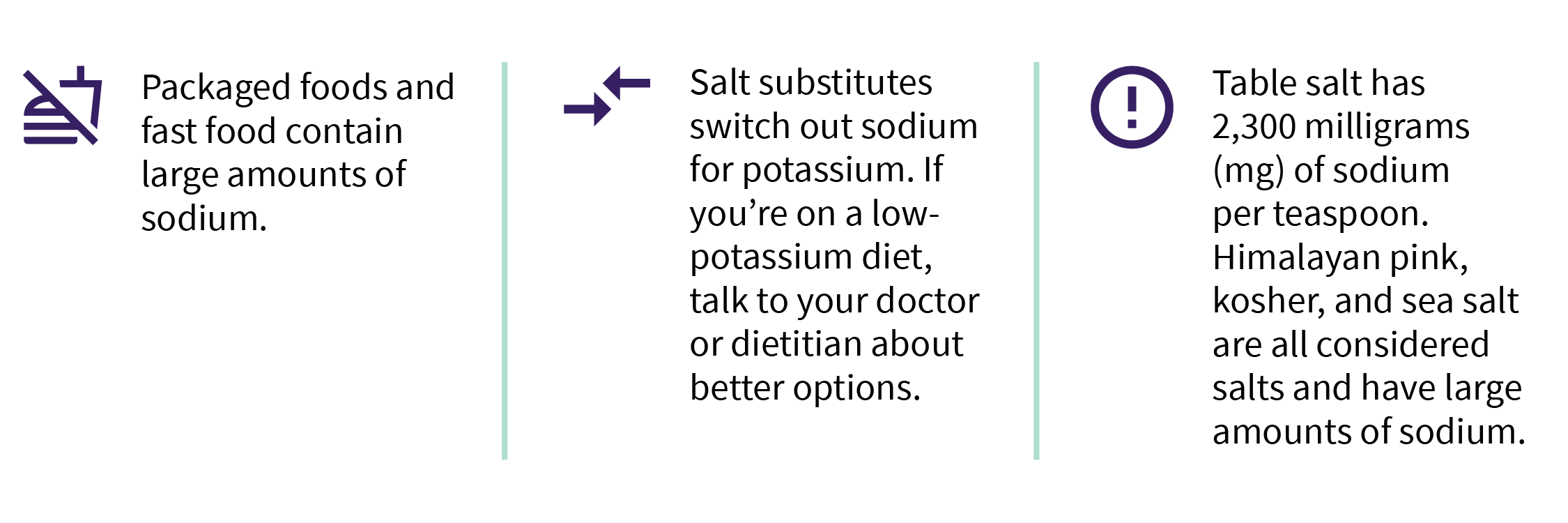Shake Off the Salt for Kidney Health
Try these simple tips to reduce salt in your meals while keeping all the flavor, with easy food swaps that make low-sodium eating delicious and kidney-friendly.

Taking steps to follow a low-sodium diet can help you feel your best. Too much sodium in your diet can cause high blood pressure and fluid retention, and increase your risk of heart disease and stroke.
Sodium adds up
You may be consuming more sodium than you realize.

- Read food labels and follow these low-sodium tips:
- Cook from scratch instead of getting fast food. Try adding flavor with seasonings like garlic powder, basil, cumin, vinegar, cilantro, lemon, and lime.
- Avoid packaged foods. Shop the outer grocery store aisles for fresh, wholesome foods.
- Choose foods with fewer mg of sodium than calories per serving. For example, animal crackers have 140 calories and 95 mg of sodium per serving.
- Look for “no added salt” on canned food labels. Always rinse canned foods to reduce sodium.
Activity
Download the activity to practice building healthier meals by replacing high-sodium foods with lower-sodium foods. The numbers represent the total mg of sodium. Add up the sodium in the meals you put together to make sure you don’t go over the limit.

High-sodium meals
Breakfast:
Sausage, egg, cheese biscuit with hashbrown, and coffee with cream
Sodium total: 1,459 mg
Lunch:
Turkey and cheese sandwich with mustard, mayo and a pickle spear
Sodium total: 1,674 mg
Dinner:
Breaded chicken patty, macaroni and cheese, canned mixed vegetables, and corn muffin
Sodium total: 1,728 mg
High-sodium daily total: 4,861 mg
.png?h=200&w=1000)
